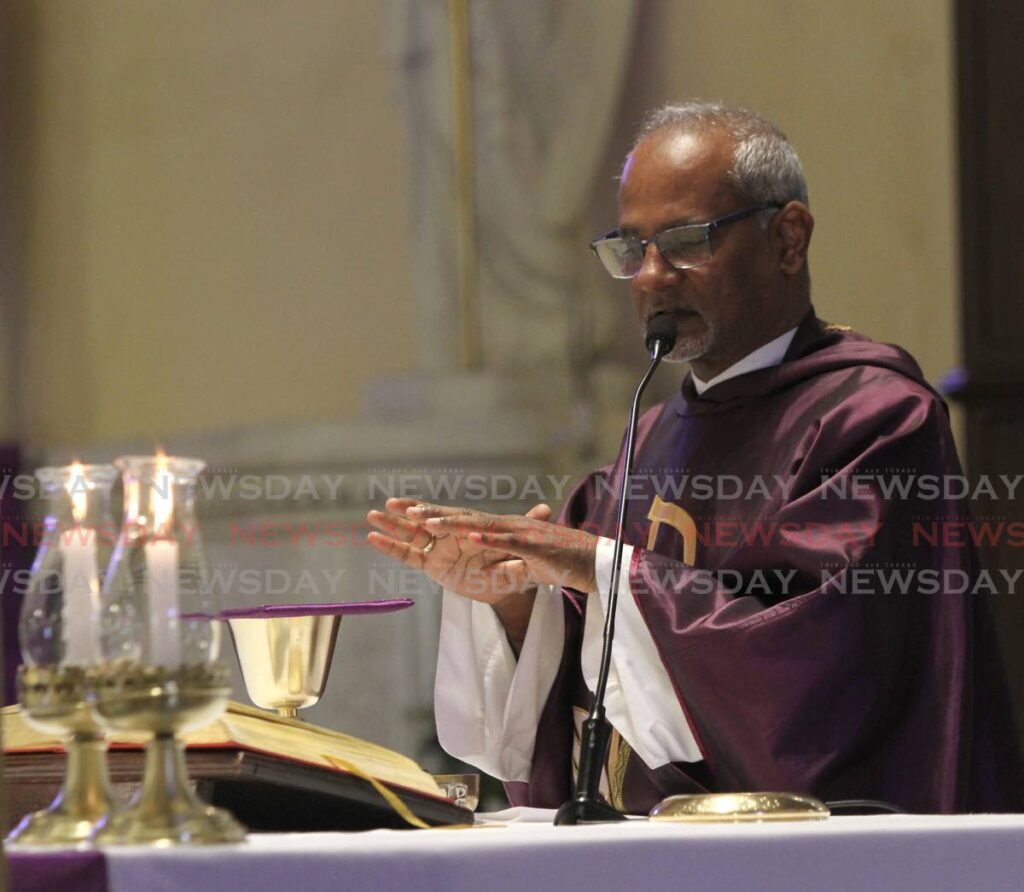Crucifixion – asking subversive questions

FR MARTIN SIRJU
HOLY WEEK is the most sacred time in the liturgical life of the Catholic Church. It recalls the last moments of the life of Jesus from his entry into Jerusalem with rejoicing and nationalistic, political aspirations raised high – a new king on the horizon – only to end with his ignominious death outside the walls of Jerusalem.
The agony leading up to the death of Jesus has been regarded as the worse death any human being can undergo. From a theological point of view this is questionable. The theological point behind Jesus’s suffering was that he shared the lot of common humanity. He lived, he suffered, he died.
The point is not whether he suffered more than any human being who ever lived but that he suffered. There are indications in the gospels that Jesus was not as physically strong as we think he was. Modern scripture scholarship indicates other condemned criminals were stronger physically.
His beatings and torture were extremely cruel. In flogging the Romans used whips that contained pieces of metal at the end so flogging would result in serious flesh wounds and blood loss. The crowning with thorns would result in further loss of blood for these thorns were rather large and caused serious cranial distress.
On his journey to Golgotha Jesus had to be helped by Simon of Cyrene because he was too weak and soldiers feared he might die along the way. In all this he identifies with so many people we priests encounter and, even more so, the sobbing mothers of murdered, innocent children: “O God, ah cyah take anymore. Why dey had to kill mih chile?” He could take no more either. He wasn’t that strong.
Jesuit scripture scholar Michael Simone notes: “Death occasionally came quickly from blood loss or sunstroke, but for others the process took days. The condemned were nailed or lashed to the cross in such a way that they had to flex their upper body in order to breathe. As their strength ran out, they asphyxiated and died.”
Jesus did not take days to die because he was weak at that point. By the time the Roman soldiers got to him he was dead already.
There was no need to break his legs to lose support and quicken asphyxiation. Like WASA woes, pressure does buss pipe. He could take no more, like millions, who are not strong enough to survive the levels of human cruelty and depravity. He shared the common lot of the weak, the expendable of TT.
Another point raised by Fr Simone was: “It is one thing to imagine Jesus taking the side of the poor. It is another thing entirely to imagine him identifying himself with insurgents, brigands, murderers and slaves.”
This is something we do not think about consciously enough. We usually say he suffered the lot of the common poor. Simone is saying more than that: insurgents – religious fundamentalists and political rebels; brigands – small and medium tief; murderers – gang leaders and gunmen; and slaves – those who question the rationale of servitude and inequality.
The issue here is not simply the fate of the common lot he shared. The issue here is also the sociological underpinnings that give rise to these rebellious groups.
By being crucified side by side with these nefarious fellows Jesus was forcing us to ask the uncomfortable questions: what are the myriad social factors conspiring together that give rise to religious and political insurgents of different kinds; that force people to steal like the young man who got shot by police for attempting to rob a KFC van in Mayaro; the types of exclusion that gives rise to street children and gangs; the holes in our education system that result in a long line of criminality stretching along the east-west corridor and now other parts of Trinidad; the victims of human trafficking – modern slavery – that can hardly be levelled at culprits in one political camp as if the other can boast about being unblemished?
His death between two thieves – invariably the poor – invites us to investigate the multifaceted roots of crime, patters of discrimination based on class and geography, the amount of true development that is lost when we are confronted with $27 billion in shady financial transactions for 2021 as highlighted by the Minister of Finance in March 2022.
Jesus was not crucified because he offended some hot-headed pious Jews. He was crucified due to the threat of power displacement; for turning status quo on its head which could cause social unrest; he was challenging what it means to truly value people.
In all this he was not a social reformer or political agitator as some scholars contend. He was a man deeply buried in his faith, inflamed by the Spirit to bring about the reign of new human and social relationships – the Kingdom of God in a messy world.
Fr Martin Sirju is the RC Cathedral administrator


Comments
"Crucifixion – asking subversive questions"